Rhamphorhynchoids
|
The rhamphorhynchoids are a paraphyletic group of basal or primitive pterosaurs. The most obvious charachteristic distinguishing them from the more derived pterodactyloids is the presence of an elongated tail, typically ending with a diamond-shaped flag.
Rhamphorhynchus sp. is one of the best known of the rhamphorynchoids, with hundreds of specimens of all ages.
Taxonomy: Pterosauria, Rhamphorhynchidae
Solnhofen Limestone, Germany
Late Jurassic Period, 150-148 Ma
Museum of Ancient Life, Utah
|
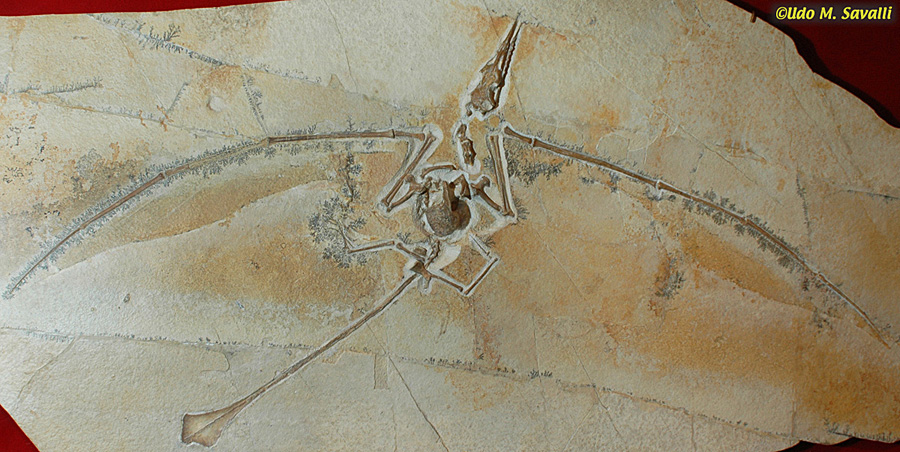
|
|
|
Some pterosaur fossils, such as this Rhamphorhynchus sp., are preserved with soft-tissue impressions to reveal their flight membranes and a fur-like covering of pycnofibers.
Taxonomy: Pterosauria, Rhamphorhynchidae
Solnhofen Limestone, Germany
Late Jurassic Period, 150 Ma
New Mexico Museum of Natural History & Science
|
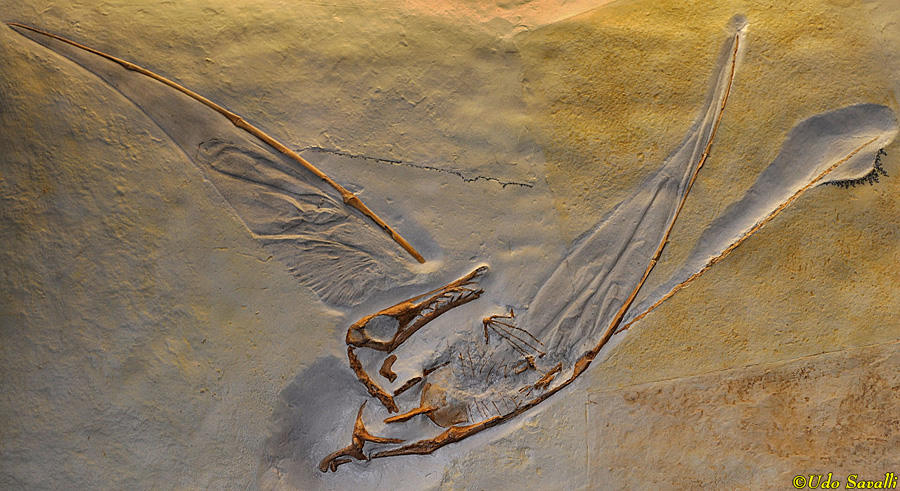
|
|
|
Reconstructed skeleton of Rhamphorhynchus muensteri (based on compressed fossils such as those above). On the ground, all pterosaurs walked quadrupedally.
Taxonomy: Pterosauria, Rhamphorhynchidae
Germany
Late Jurassic Period, 150 Ma
Wyoming Dinosaur Center
|
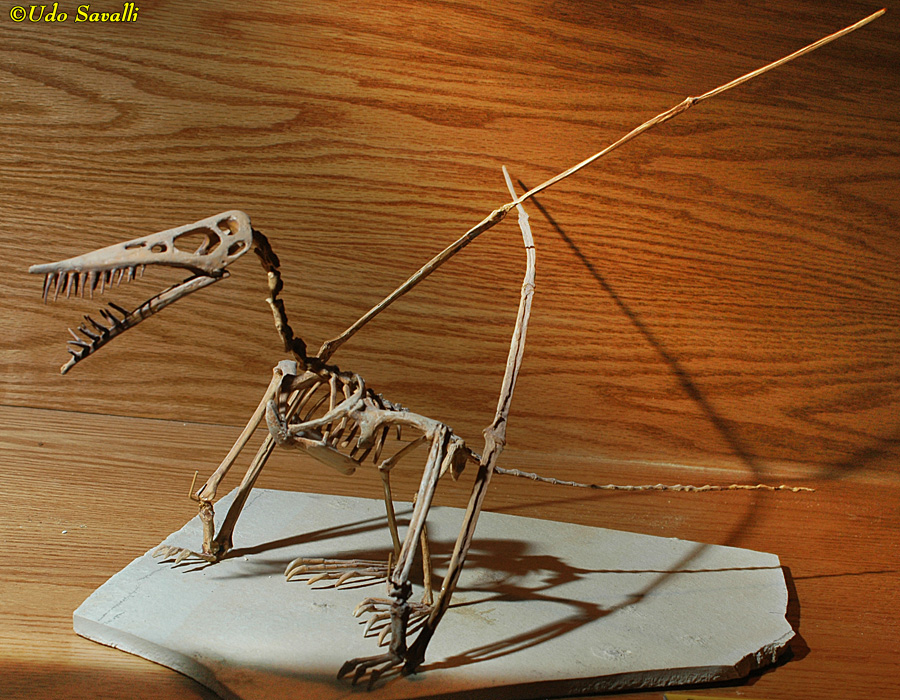
|
|
|
Most pterodactyloids had well-developed conical teeth, such as in this Harpactognathus sp.
Taxonomy: Pterosauria, Rhamphorhynchidae
Morrison Formation; western North America
Late Jurassic Period
Museum of Ancient Life, Utah
|
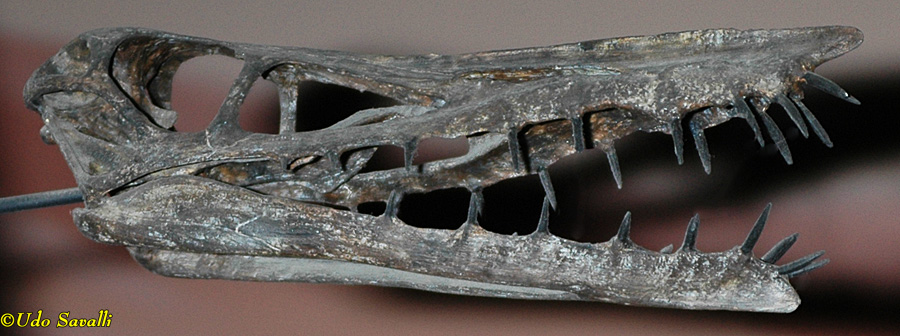
|
|
|
Dorygnathus sp.
Taxonomy: Pterosauria, Rhamphorhynchidae
Germany
Early Jurassic Period, 180 Ma
Dinosaur Discovery Site, Utah
|
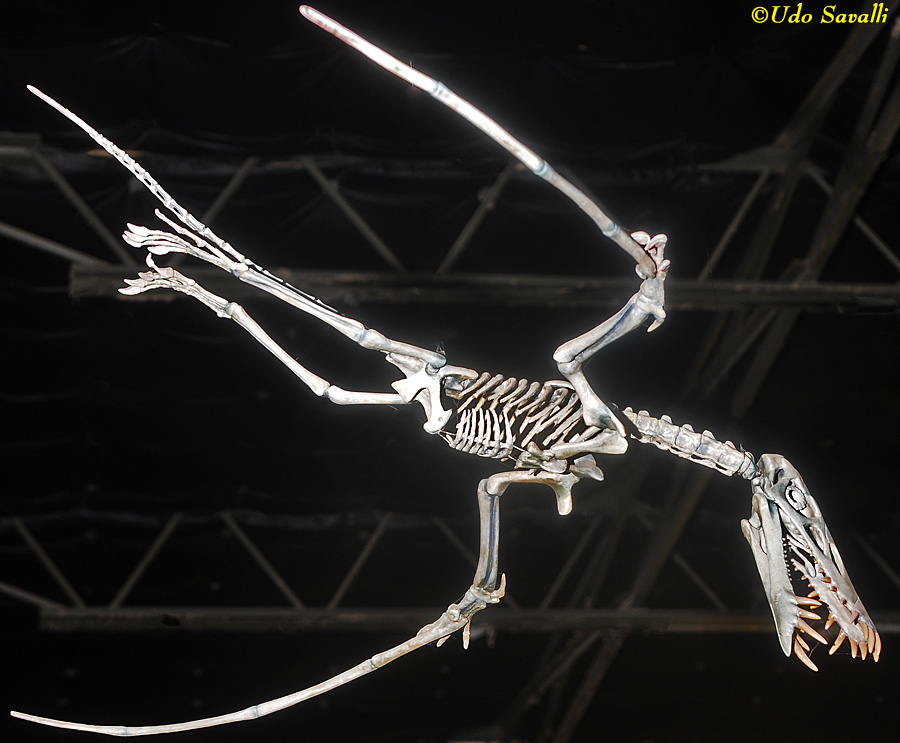
|
|
|
Campylognathoides liasicus (cast of fossil in oil shale).
Taxonomy: Pterosauria, Campylognathoididae
Germany
Early Jurassic Period, 180 Ma
Arizona Museum of Natural History
|
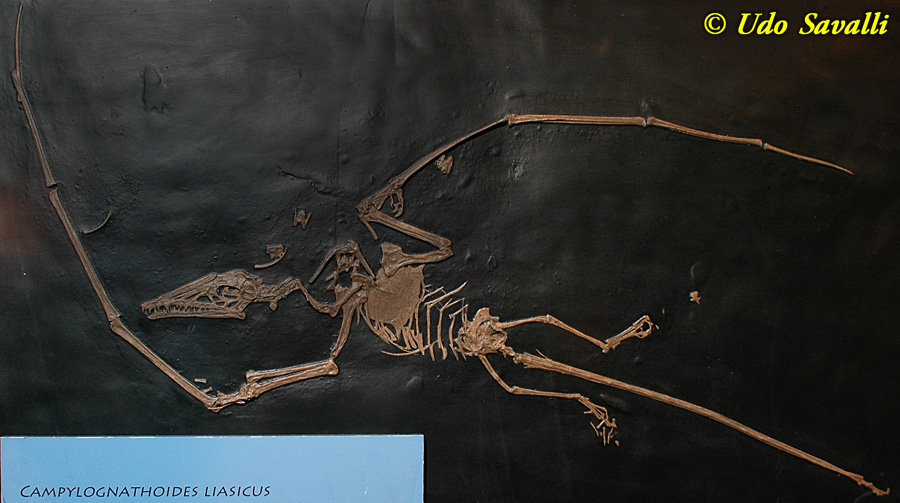
|
|
|
The limb structure and relatively short wings of Dimorphodon macronyx suggest it was a poor flier and spent much of its time on the ground stalking small prey such as lizards.
Taxonomy: Pterosauria, Dimorphodontidae
Blue Lias Formation, England
Early Jurassic Period, 197-195 Ma
Dinosaur Resource Center, Colorado
|
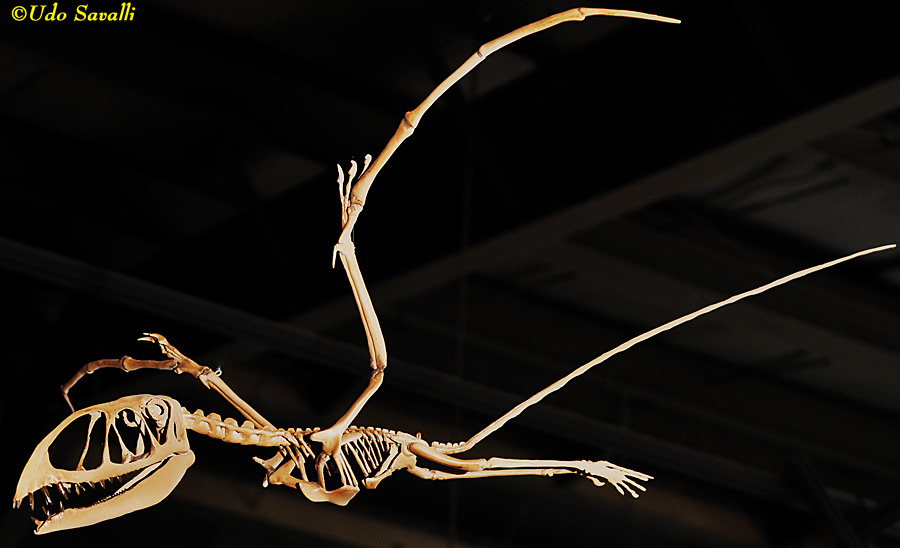
|
|
|
Jeholopterus ninchengensis was one of the smallest pterosaurs. Its short, broad head suggests it captures insects on the wing (reconstructed skeleton). Skin impressions indicate it was covered in pycnofibers
Taxonomy: Pterosauria, Anurognathidae
China
Late Jurassic Period, 160 Ma
Arizona Museum of Natural History
|
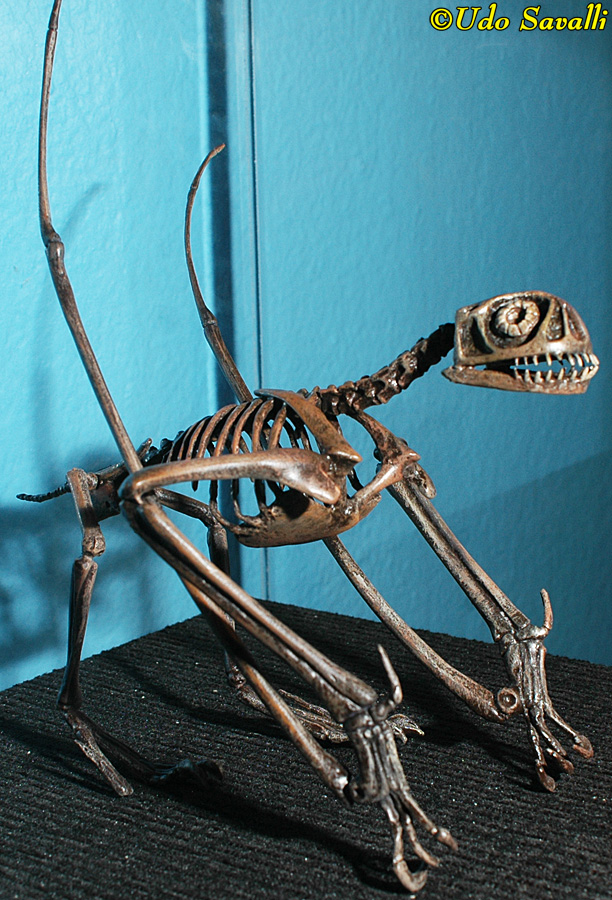
|
|
|
Cast of multiple trackways of pterosaurs. The tracks are of varying sizes, suggesting either multiple species or one species with individuals of multiple ages. A few tracks have been highlighted: blue indicates a hind foot, while green is the front foot. Such trackways helped establish pterosaurs as quadrupedal. Although the makers of these trackways is unknown, their age suggests they were rhamphorhynchoids as they predate the oldest known pterodactyloids.
Taxonomy: Pterosauria
Summerville Formation, Ferron, Utah
Middle Jurassic Period, 165 Ma
Dinosaur Discovery Site, Utah
|
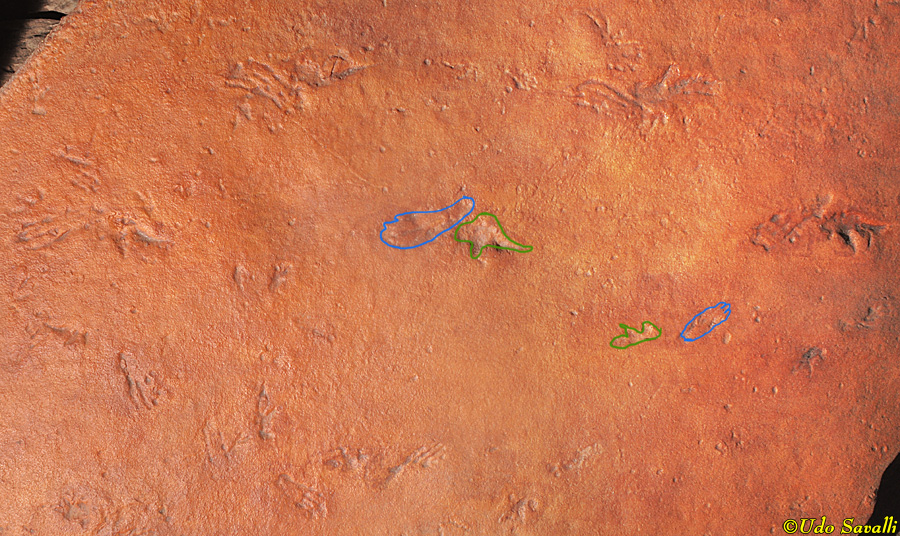
|
|
|
Life models of "rhamphorhynchoid" pterosaurs, from left to right: Campylognathoides, Peteinosaurus, Dorygnathus, & Preondactylus.
Taxonomy: Pterosauria; "Rhamphorhynchoidea"
Late Triassic to Early Jurassic Periods; Europe
Museum of Ancient Life, Utah
|
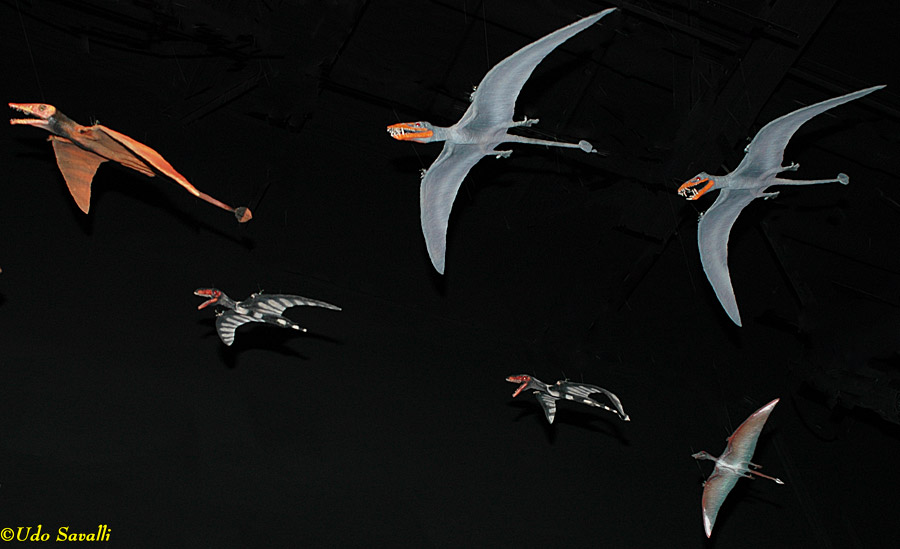
|
|
|
Life model of Rhamphorhynchus sp.
Taxonomy: Pterosauria; Rhamphorhynchidae
Late Jurassic Period, 150 Ma; Germany
New Mexico Museum of Natural History & Science
|
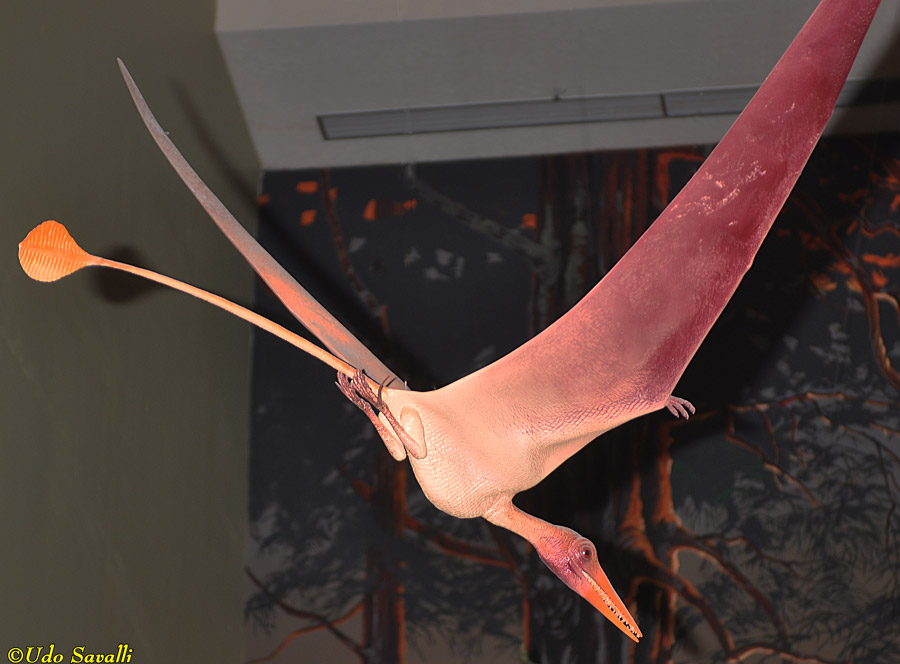
|
|
|
Life model of Harpactognathus gentryii.
Taxonomy: Pterosauria; Rhamphorhynchidae
Late Jurassic Period; Wyoming
Museum of Ancient Life, Utah
|
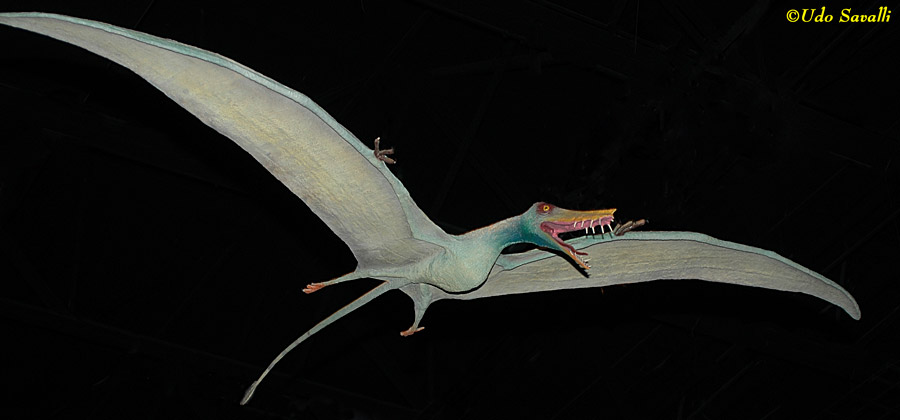
|
|
|
Life models of Anurognathus sp. (left) & Scaphognathus sp. (right).
Taxonomy: Pterosauria; Anurognathidae & Rhamphorhynchidae
Late Jurassic Period; Europe
Museum of Ancient Life, Utah
|
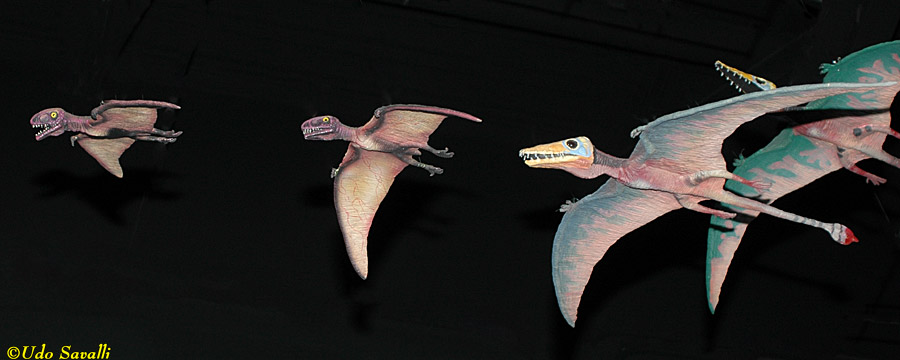
|
|
|
Life model of Batrachognathus sp.
Taxonomy: Pterosauria; Anurognathidae
Late Jurassic Period; Eurasia
Museum of Ancient Life, Utah
|
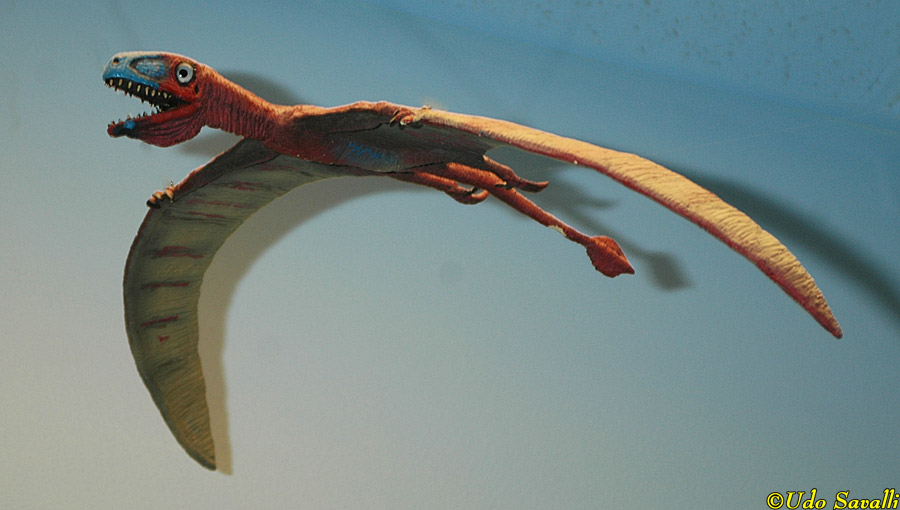
|
|
|
Life model of Jeholopterus ningchengensis.
Taxonomy: Pterosauria; Anurognathidae
Early Cretaceous, 130-125 Ma; China
Fernbank Museum of Natural History, Georgia
|
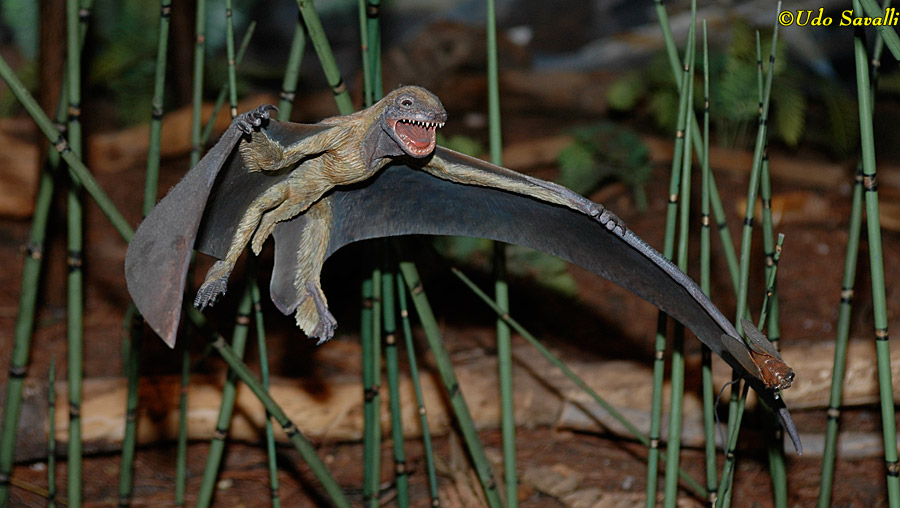
|
|
|
Life model of Dimorphodon sp.
Taxonomy: Pterosauria; Dimorphodontidae
Early Jurassic, 195-190 Ma; England, Mexico
Dinosaur Discovery Site, Utah
|
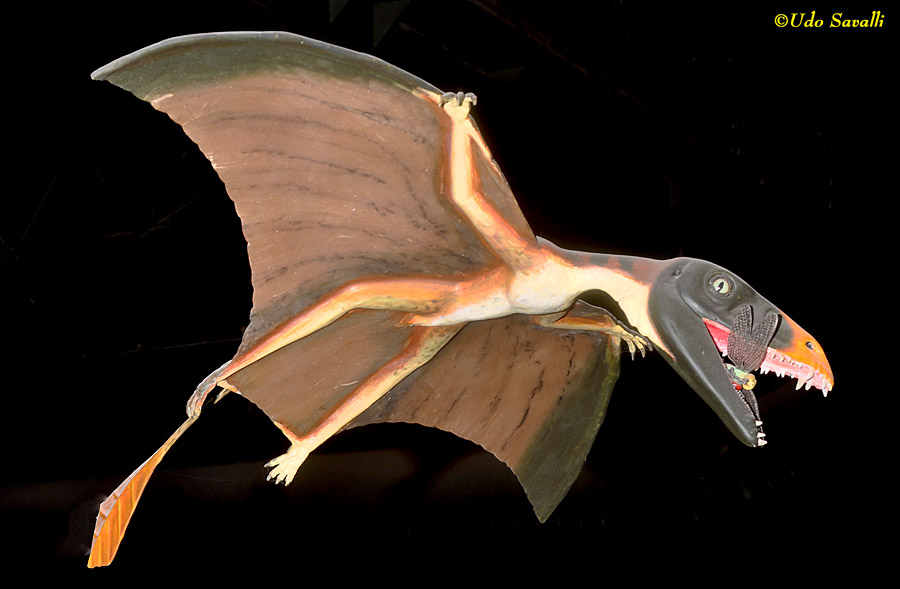
|
|
|
Life model of a male Darwinopterus modularis, a species that is intermediate between the primitive "rhamphorynchoids" and the more derived pterodactyloids. Only the males had crests on their head.
Taxonomy: Pterosauria; Wukongopteridae
Middle Jurassic Period, 160 Ma; China
Arizona Museum of Natural History
|
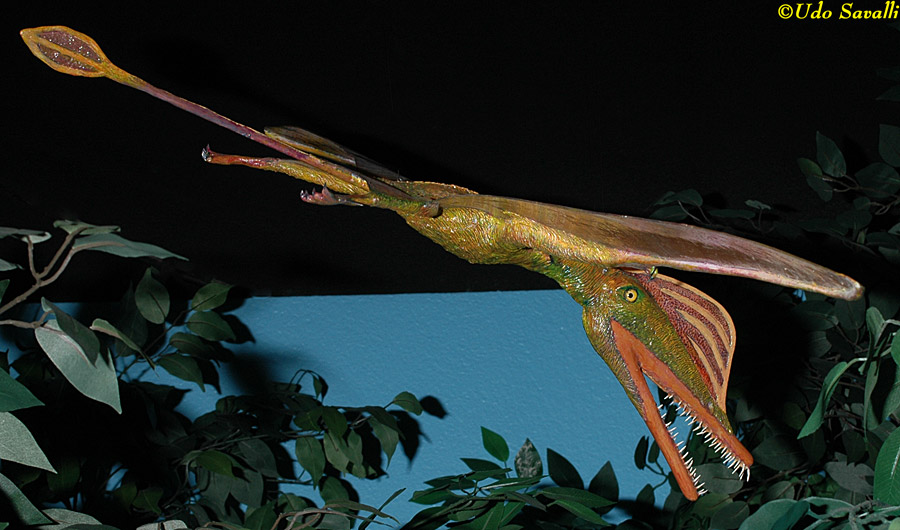
|
|
Pterodactyloids
|
The pterodactyloids are a clade of all of the derived pterosaurs, notable for their very reduced tail as well as more subtle changes to the wings and skull. The common name "pterodactyl" should refer only to this group, or even just to the genus Pterodactylus, and not all pterosaurs.
Diopecephalus kochi was formerly thought to be the juvenile stages of Pterodactylus but now is considered a separate species It probably ate fish.
Taxonomy: Pterosauria, Pterodactyloidea, Pterodactylidae
Germany
Late Jurassic Period
Black Hills Institute Museum, South Dakota
|
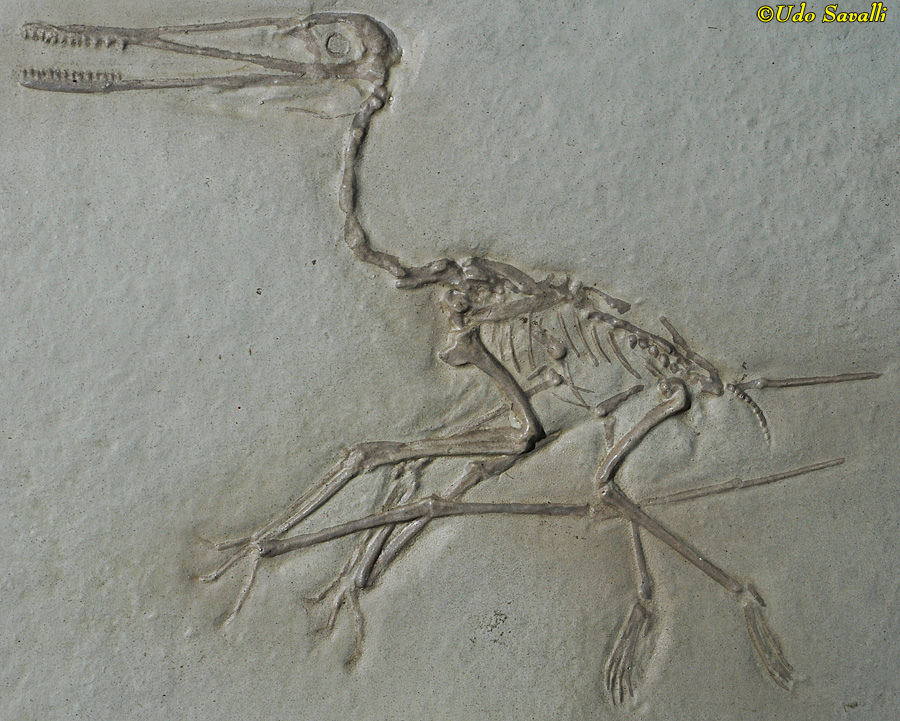
|
|
|
Pterodactylus antiquus juvenile.
Taxonomy: Pterosauria, Pterodactyloidea, Pterodactylidae
Eichstatt, Germany
Late Jurassic Period, 150 Ma
Wyoming Dinosaur Center
|
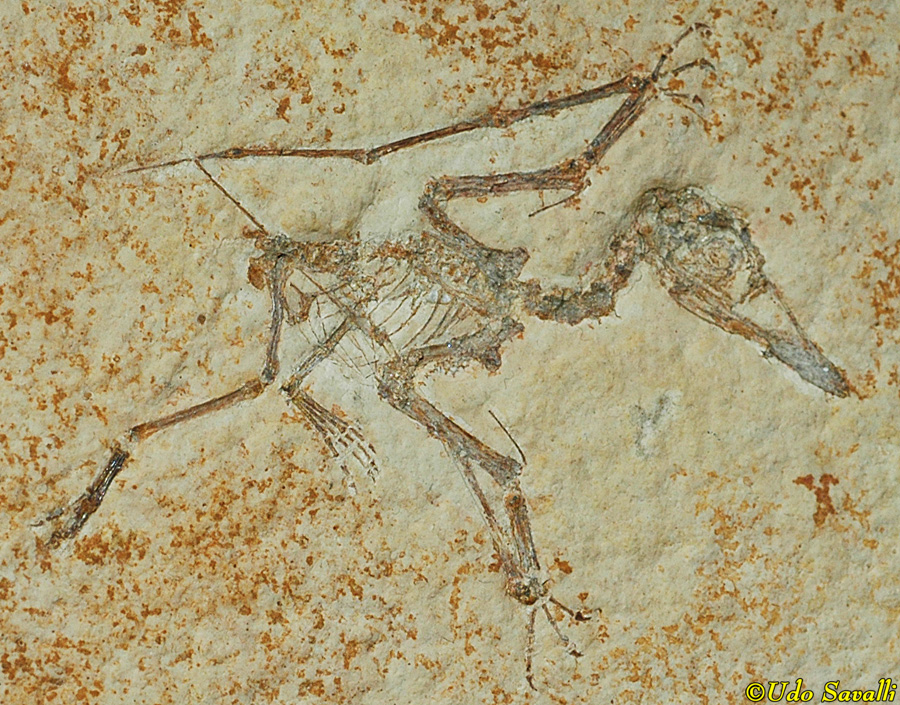
|
|
|
The lower jaw of Pterodaustro guinazui was lined with hundreds of long, very slender teeth that formed a filter-feeding basket. It probably fed similar to modern flamingos by sifting out small crustaceans from the water.
Taxonomy: Pterosauria, Pterodactyloidea, Ctenochasmatidae
South America
Early Cretaceous Period, 105 Ma
Arizona Museum of Natural History
|
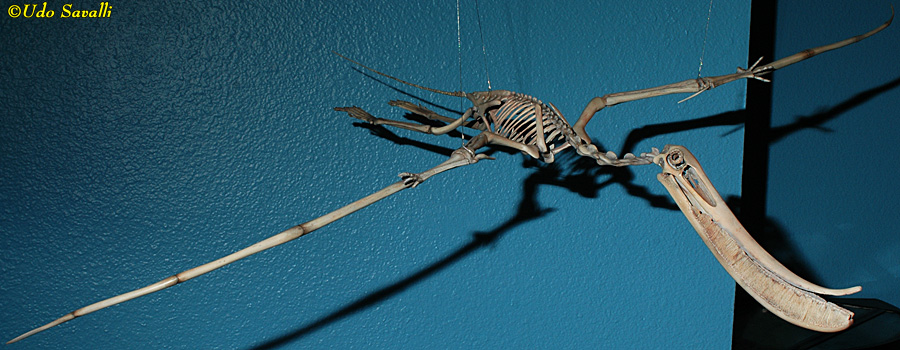
|
|
|
Pteranodon longiceps was a large toothless species of pterandodontian pterosaur, with a wingspan up to 7 m. It flew over a shallow inland sea and most likely ate fish. This fossil skeleton is of a male, based on the presence of the large head crest.
Taxonomy: Pterosauria, Pterodactyloidea, Pteranodontia
Kansas
Late Cretaceous Period, 86 Ma
Los Angeles Museum of Natural History
|
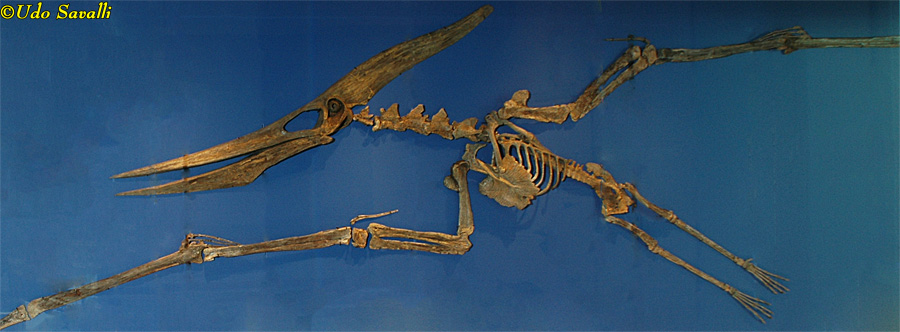
|
|
|
Pteranodon sternbergi is closely related to P. longiceps (above), but differs in the shape of the crest. P. sternbergi occurs slightly earlier in the fossil record than P. longiceps, so they probably represent chronospecies: a single evolutionary lineage that changed over time.
Taxonomy: Pterosauria, Pterodactyloidea, Pteranodontia
Western USA
Late Cretaceous Period, 84 Ma
Arizona Museum of Natural History
|
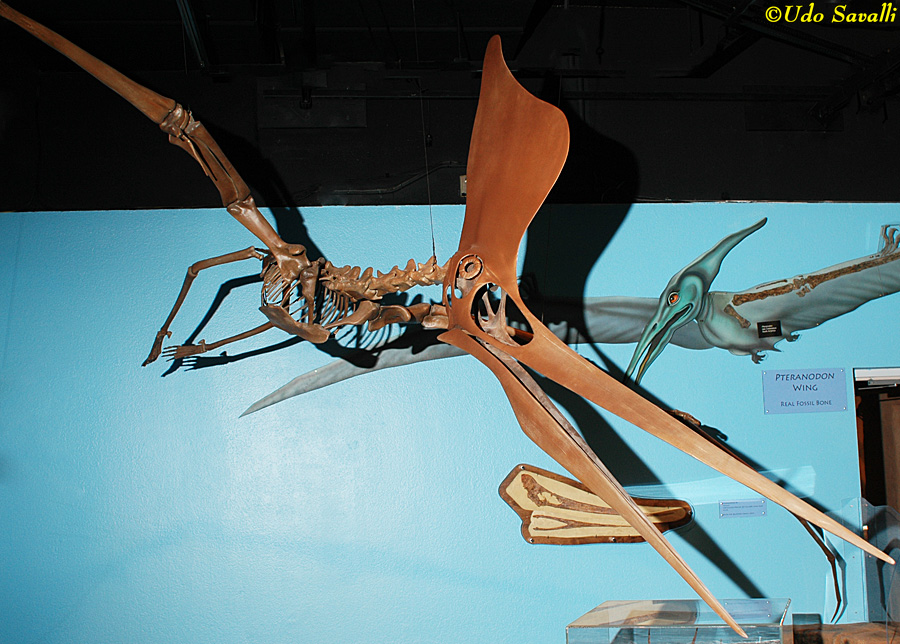
|
|
|
The females of both Pteranodon species were essentially identical with only a very small crest. They were also smaller in body size than the males.
Taxonomy: Pterosauria, Pterodactyloidea, Pteranodontia
Niobrara Chalk, western USA
Late Cretaceous Period, 86-84 Ma
Museum of Ancient Life, Utah
|
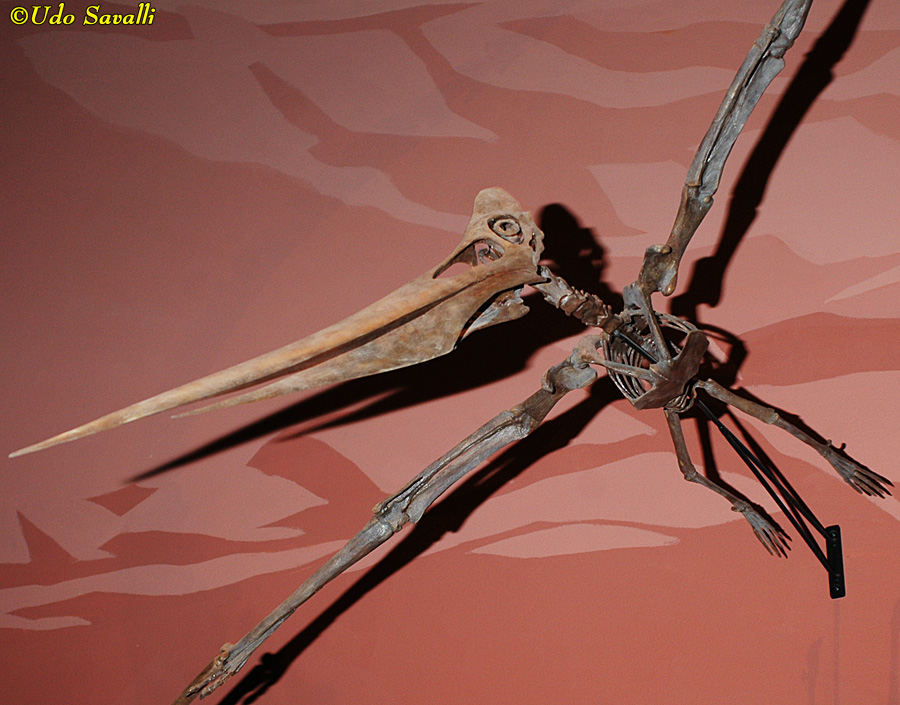
|
|
|
Juvenile Pteranodons of both species had small crests similar to those in females. As typical for pterosaurs, juveniles could fly at an early age (possibly even right after hatching).
Taxonomy: Pterosauria, Pterodactyloidea, Pteranodontia
Western USA
Late Cretaceous Period, 85 Ma
Arizona Museum of Natural History
|
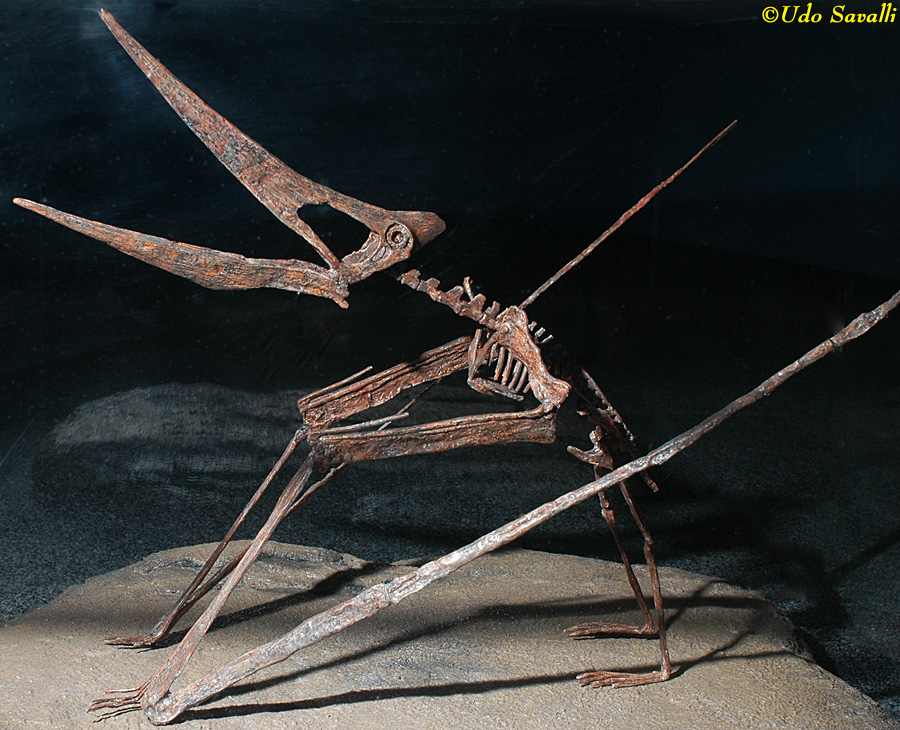
|
|
|
Nyctosaurus gracilis had the longest crest of any pterosaur. As with Pteranodon, it probably functioned in sexual selection, such as competition among males or to attract females.
Taxonomy: Pterosauria, Pterodactyloidea, Pteranodontia
Niobrara Chalk, Gove Co., Kansas
Late Cretaceous Period, 84 Ma
Dinosaur Resource Center, Colorado
|
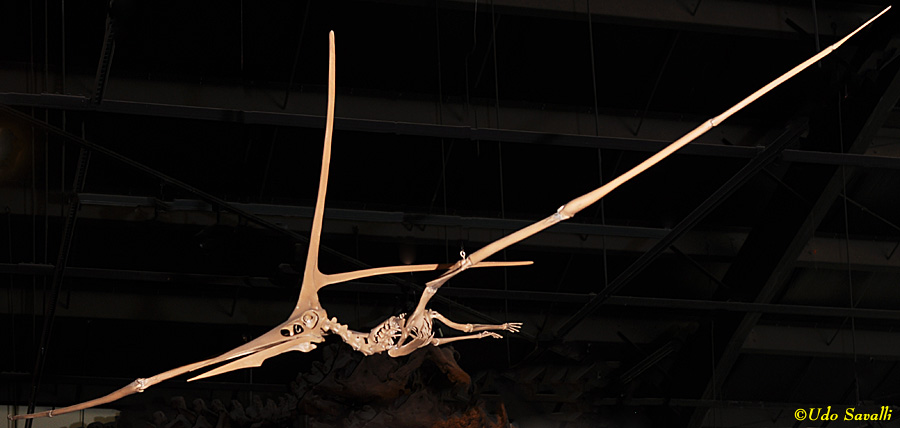
|
|
|
The Ornithocheiridae were were long-winged pterosaurs associated with coastal environments. They had well-developed teeth and probably fed on fish. Many had thin crests along their snouts.
Anhanguera sp. is one of the best known genera in this clade with multiple species.
Taxonomy: Pterosauria, Pterodactyloidea, Ornithocheiridae
Brazil
Early Cretaceous, 125-112 Ma
Fernbank Museum of Natural History, Atlanta
|
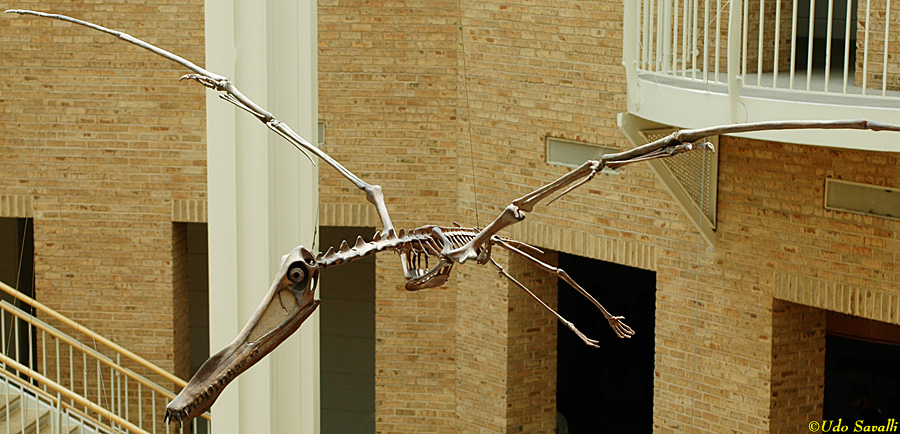
|
|
|
Santanadactylus sp.
Taxonomy: Pterosauria, Pterodactyloidea, Ornithocheiridae
Santana Formation; Brazil
Early Cretaceous Period
Wyoming Dinosaur Center
|
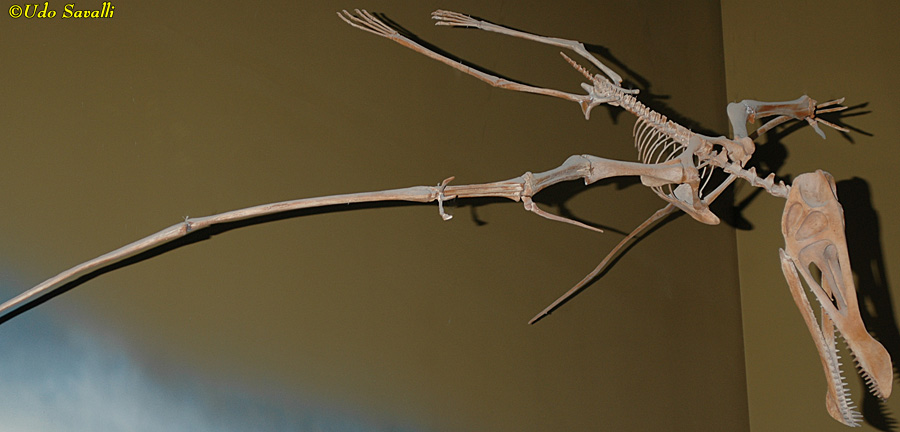
|
|
|
"Tropeognathus" robustus. The placement of this species is uncertain; it has also been placed in Ornithocheirus and Anhanguera.
Taxonomy: Pterosauria, Pterodactyloidea, Ornithocheiridae
Brazil
Early Cretaceous Period
Wyoming Dinosaur Center
|
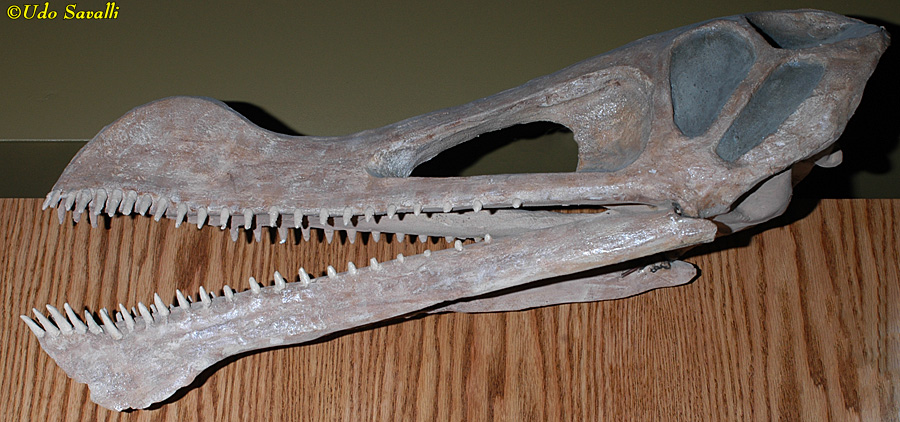
|
|
|
The Azhdarchoidea is a clade of derived, specialized pterosaurs. Some reached very large size and most were toothless. Many had head crests of various sorts. This is Tapejara wellnhoferi.
Taxonomy: Pterosauria, Pterodactyloidea, Azhdarchoidea
Santana Formation, Brazil
Early Cretaceous Period, 108 Ma
Wyoming Dinosaur Center
|
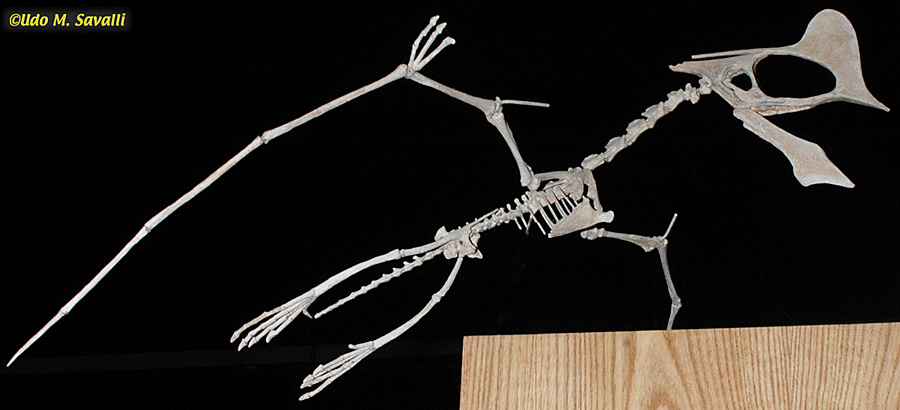
|
|
|
The skull of Tupuxuara longicristatus.
Taxonomy: Pterosauria, Pterodactyloidea, Azhdarchoidea
Santana Formation, Brazil
Early Cretaceous Period, Aptian Stage, 112-108 Ma
Museum of Ancient Life, Utah
|
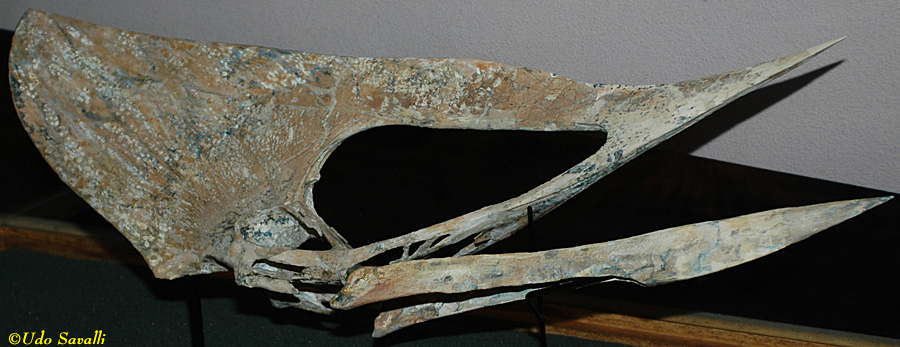
|
|
|
Quetzalcoatlus northropi was one of the largest pterosaurs ever, with a wingspand of 10 m and standing as tall as a modern giraffe. It was probably a terrestrial predator, stalking prey in the manner of modern storks.
Taxonomy: Pterosauria, Pterodactyloidea, Azhdarchoidea
Texas
Late Cretaceous Period, Maastrichtian Stage, 68-66 Ma
Dinosaur Resource Center, Colorado
|
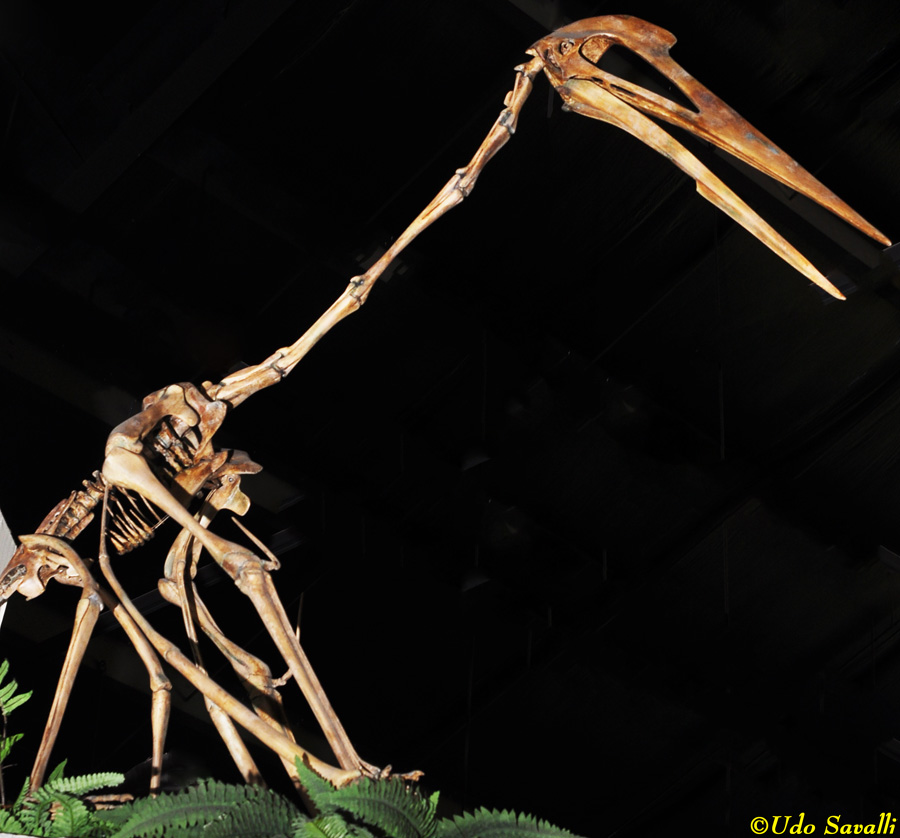
|
|
|
Life model of Sinopterus dongi.
Taxonomy: Pterosauria; Pterydactyloidea; Tapejaridae
Early Cretaceous Period, 130-125 Ma; China
Fernbank Museum of Natural History, Georgia
|
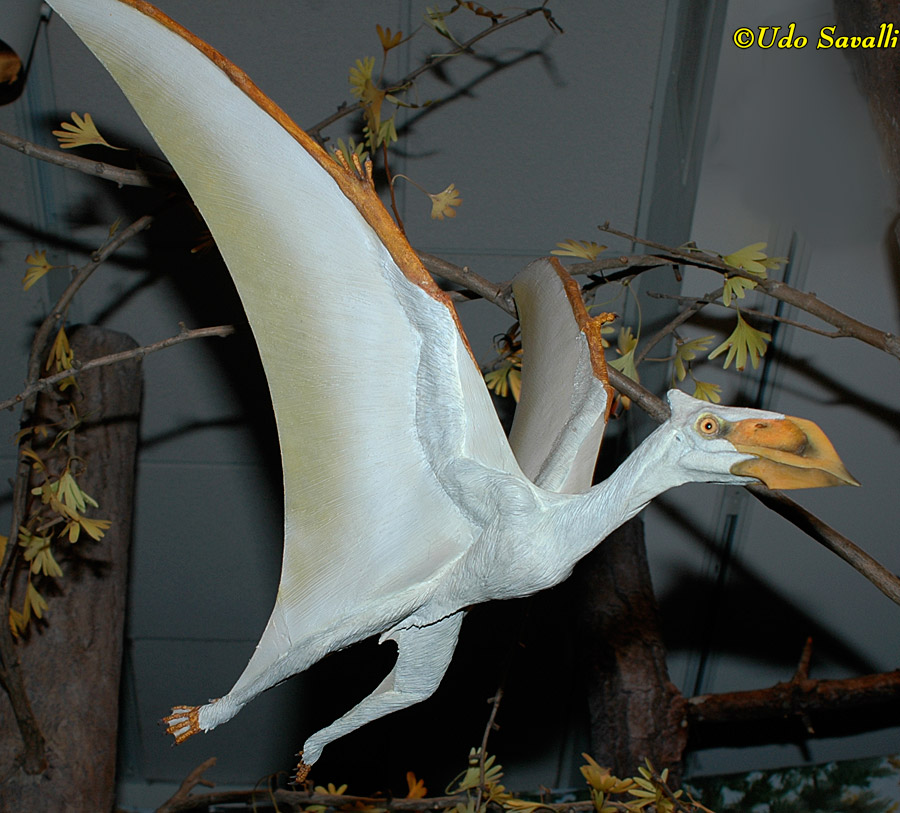
|
|
|
Life model of Pterodactylus antiquus.
Taxonomy: Pterosauria; Pterydactyloidea; Pterodactylidae
Late Jurassic Period, 151-148 Ma; Europe, Africa
Museum of Ancient Life, Utah
|
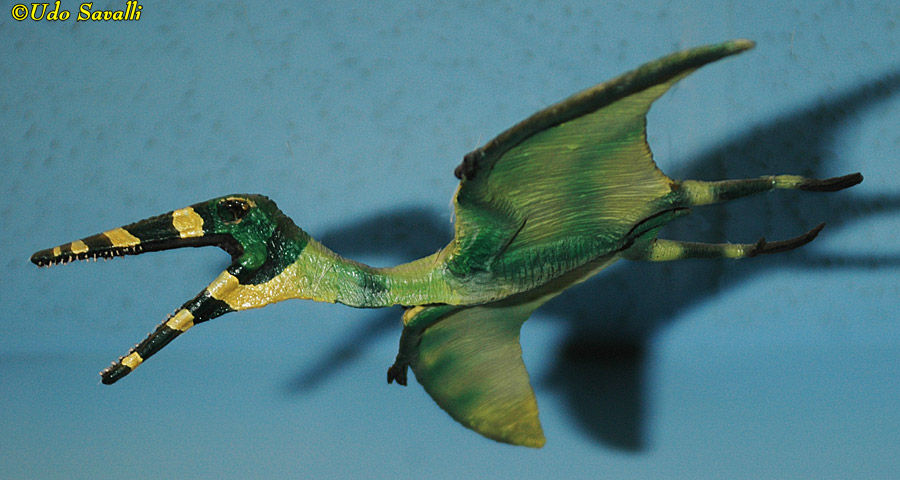
|
|
|
Life models of Germanodactylus cristatus.
Taxonomy: Pterosauria; Pterydactyloidea; Germanodactylidae
Late Jurassic Period, 151-148 Ma; Germany
Museum of Ancient Life, Utah
|
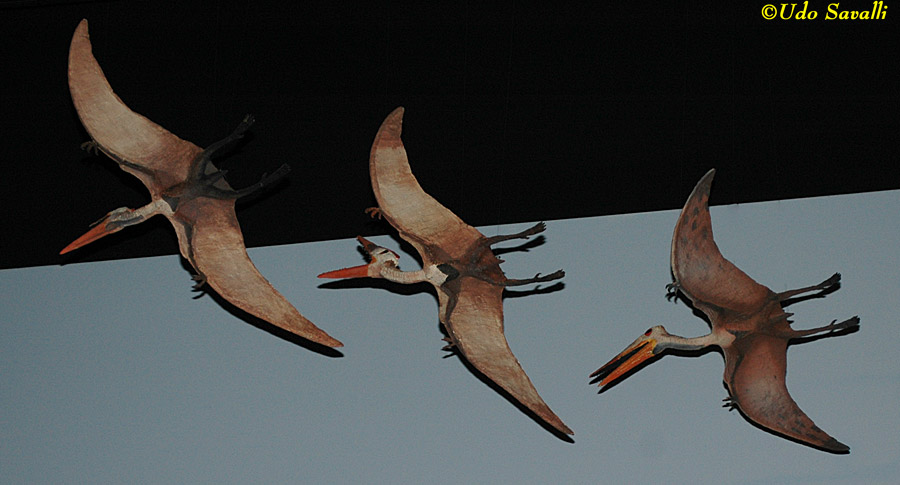
|
|
|
Life model of Pterodaustro guinazui (see head closeup, below).
Taxonomy: Pterosauria; Pterydactyloidea; Ctenochasmatidae
Early Cretaceous Period, 105 Ma; South America
Museum of Ancient Life, Utah
|
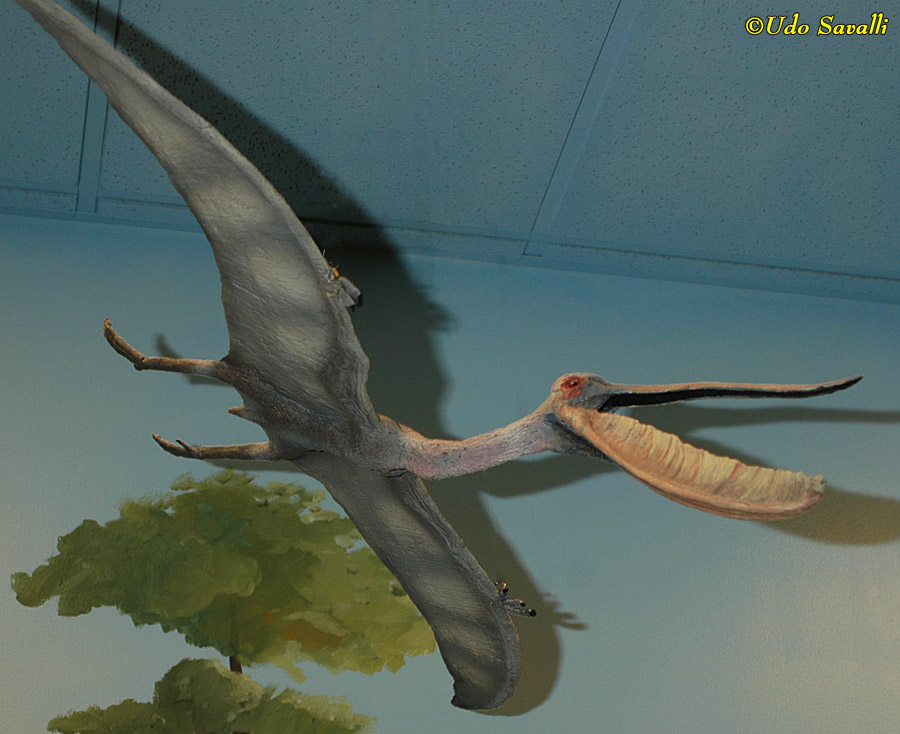
|
|
|
Model of a Pterodaustro guinazui head, showing the numerous long, slender teeth that form a filter-feeding basket.
Taxonomy: Pterosauria; Pterydactyloidea; Ctenochasmatidae
Early Cretaceous Period, 105 Ma; South America
Arizona Museum of Natural History
|
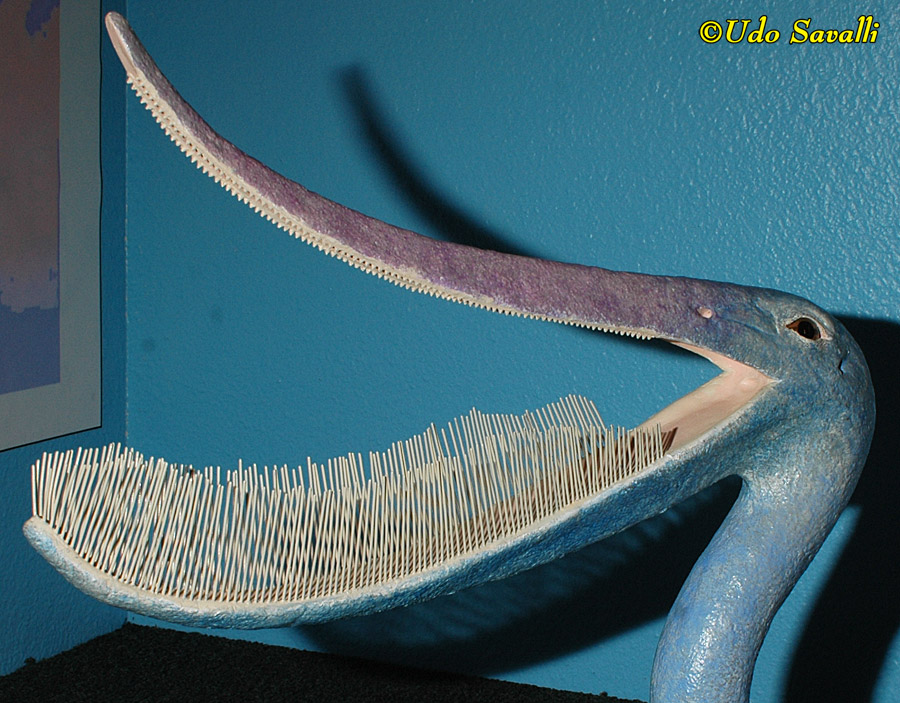
|
|
|
Life models of Ornithocheirus mesembrinus heads.
Taxonomy: Pterosauria; Pterydactyloidea; Ornithocheiridae
Early Cretaceous Period, 110 Ma; South America
Arizona Museum of Natural History
|
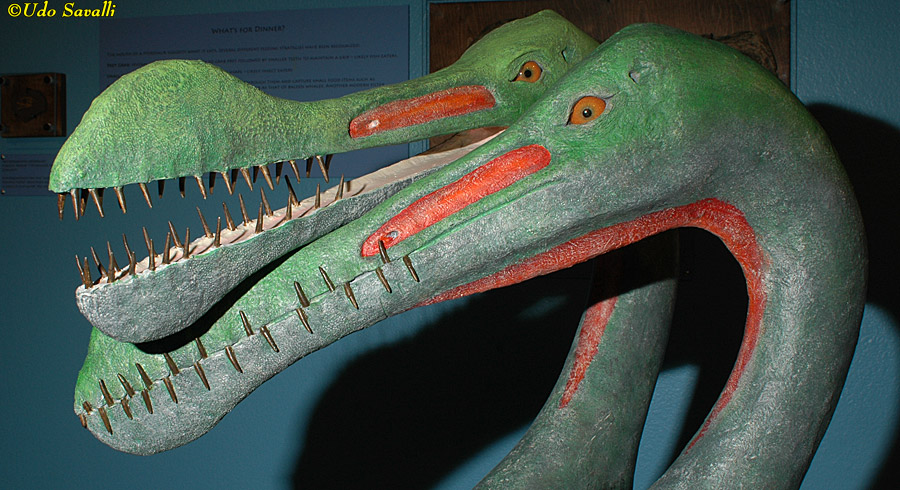
|
|
|
Life model of Quetzalcoatlus northropi.
Taxonomy: Pterosauria; Pterydactyloidea; Azhdarchidae
Late Cretaceous Period, 68-65 Ma; USA
Museum of Ancient Life, Utah
|

|
|
|
Life model of a male Pteranodon longiceps (females have only a very short crest). Compare with the closely related P. sternbergi, below.
Taxonomy: Pterosauria; Pterydactyloidea; Pteranodontidae
Late Cretaceous Period, 86-84 Ma; North America
San Diego Natural History Museum
|
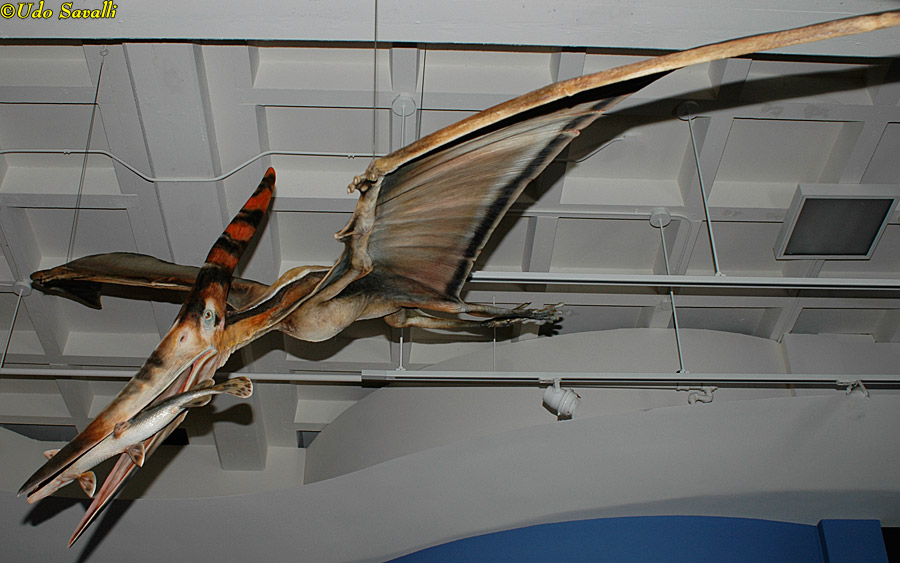
|
|
|
Life model of a male Pteranodon sternbergi. Compare the head crest with that of P. longiceps, above.
Taxonomy: Pterosauria; Pterydactyloidea; Pteranodontidae
Late Cretaceous Period, 85 Ma; North America
Arizona Museum of Natural History
|
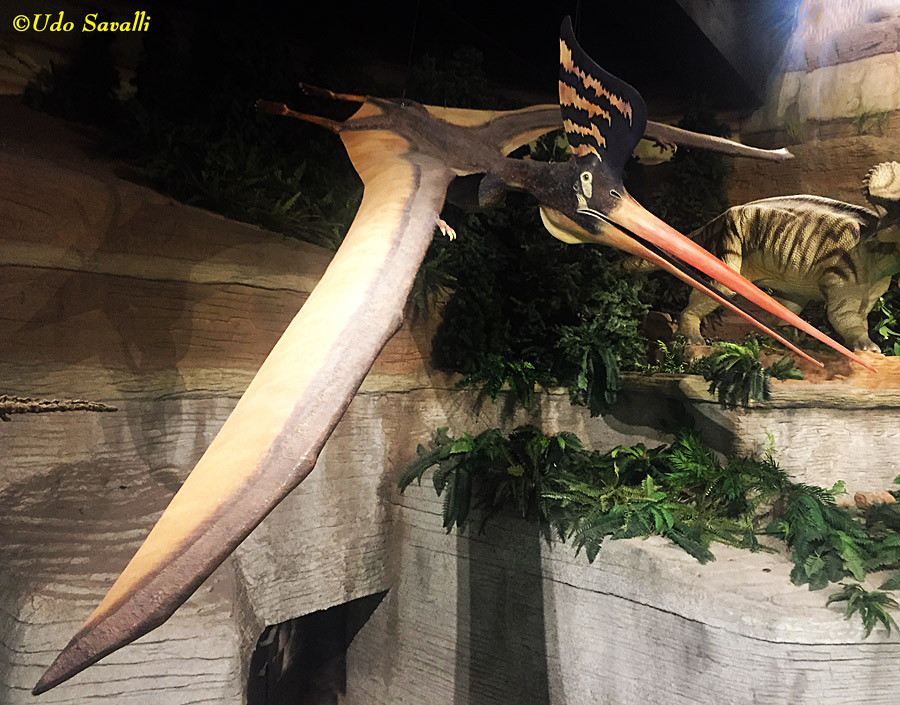
|
|
|







































